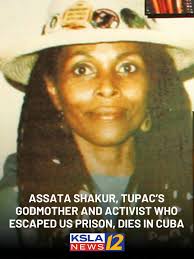Exploring the Life of Assata Shakur: A Revolutionary Icon

Introduction
Assata Shakur, born JoAnne Chesimard, is a significant figure in American history known for her role in the Black Liberation Army and her subsequent flight to Cuba after being convicted of murder in the 1970s. As the first woman to be placed on the FBI’s Most Wanted list, Shakur’s story raises crucial discussions about race, justice, and political activism in the United States.
The Early Life of Assata Shakur
Born on July 16, 1947, in New Jersey, Shakur grew up during a time of societal upheaval and civil rights movements. Her early experiences with racism and inequality motivated her to engage in political action. In the late 1960s, she became involved with the Black Panther Party, which further solidified her commitment to fighting for black liberation.
The 1970s: Activism and Imprisonment
Shakur’s activism continued as she joined the Black Liberation Army (BLA), an underground organization that aimed to promote the rights of African Americans through both political means and armed resistance. She was accused of a series of violent acts, culminating in a shootout in 1973 in which a New Jersey State Trooper was killed. Shakur was arrested, but during her trial, many supporters viewed her as a political prisoner rather than a criminal, claiming a miscarriage of justice fueled by racial bias.
Asylum in Cuba
In 1979, while hospitalized for a bullet wound, Shakur escaped custody and fled to Cuba, where she was granted political asylum. Her presence in Cuba has kept her story alive, as she continues to write and advocate for social justice issues from abroad. Cuba has embraced her as a symbol of resistance against oppression, further entrenching her status as a revolutionary figure.
Legacy and Current Relevance
Over the years, Shakur has remained a contentious figure in American society, evoking strong opinions on both sides of the political spectrum. In recent times, discussions surrounding racial justice, police violence, and political prisoners have brought her story back into public discourse, highlighting ongoing issues in the United States. In 2013, the FBI re-included Shakur on its Most Wanted list, underscoring the complex dynamics of justice, race relations, and political dissent in America.
Conclusion
Assata Shakur’s life represents more than just a story of crime and escape; it embodies the struggle for justice and equality faced by countless individuals in a racially stratified system. Her past and ongoing significance provoke vital conversations about race, revolution, and resistance. As more activists emerge in contemporary movements, her legacy serves as a reminder that the fight for social justice is an ongoing battle and one that remains deeply relevant today.
